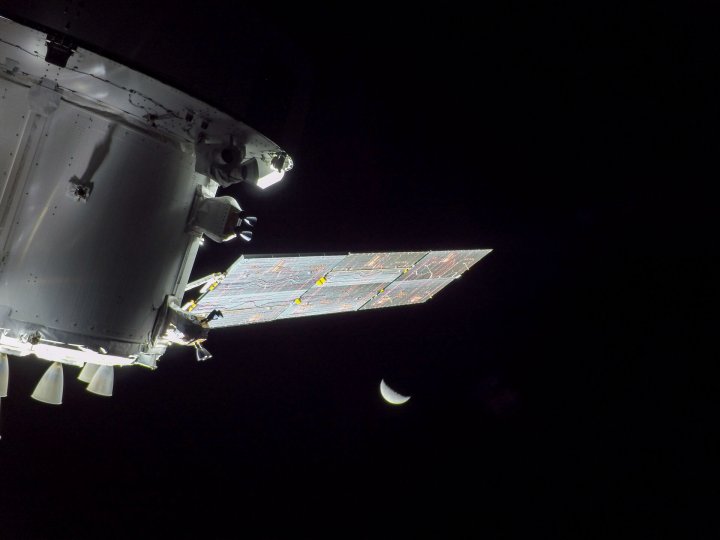NASA’s Orion spacecraft has entered orbit around the moon, marking the start of its week-long orbit as part of the Artemis I mission. The plan is for the uncrewed spacecraft to test out equipment and hardware ahead of planned crewed missions around and to the moon, named Artemis II and III, respectively. To get into this orbit, Orion performed an engine burn for around one and a half minutes on Friday, November 25.
Orion is in an orbit called a distant retrograde orbit, meaning it is 40,000 miles away from the moon and is moving around the moon in the opposite direction from how the moon moves around the Earth. This efficient orbit requires minimal fuel to maintain, and as this orbit is distant from the moon, the spacecraft will complete half an orbit around the moon in one week before heading back toward Earth.

At some point today, Saturday, November 26, Orion will pass the record for the farther distance traveled by a spacecraft designed for humans, according to NASA. The record was set by the Apollo 13 spacecraft at 248,655 miles (400,171 km) from Earth, and Orion is expected to travel a total of 270,000 miles from Earth — a point it should reach on Monday.
In an update by the European Space Agency (ESA), which provided Orion’s service module, Philippe Deloo, manager for Orion Service Module Program at ESA, shared that the fuel efficiency of the spacecraft is better than expected.
“The European Service Module is operating more fuel-efficiently than the Artemis mission designers had foreseen, and it produces more electrical power while consuming less — many things have impressed us on the module’s performance so far,” Deloo said. “Mission control is enjoying pushing Orion and the European Service Module to their limits. The years of planning, designing, and building to the highest specifications are paying off, the European Service Module is performing better than we could have ever expected, and we have lots of data to analyze and learn from to ensure we will be taking astronauts to the Moon in the safest and most efficient way possible.”



